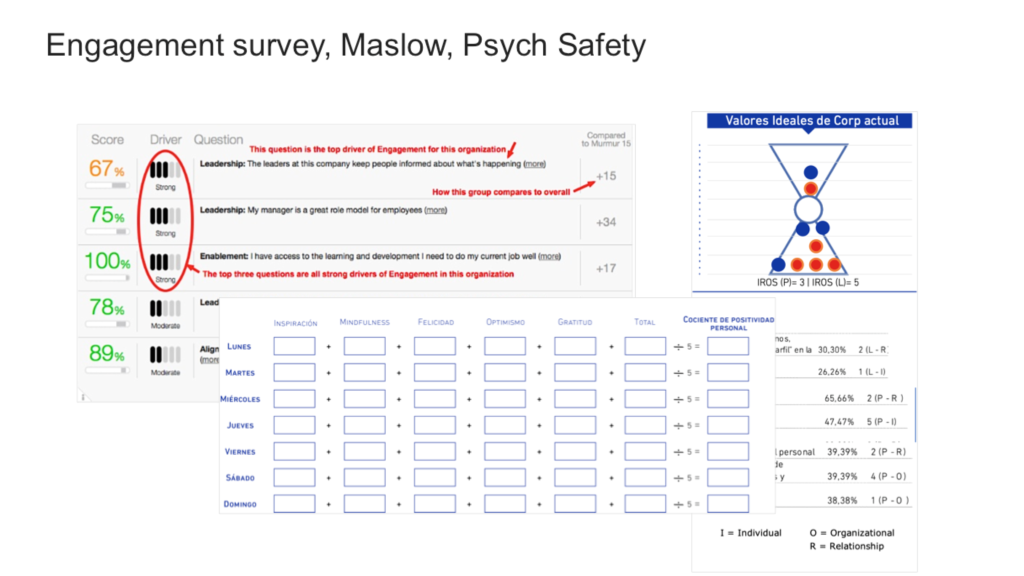Analysing the status of an organisation is the first step on the road to digital transformation
The correct functioning of an ORGANISATION depends on a large number of factors, both external and internal. In both cases it is essential to carry out a status that allows us to know where our organisation is and how far we are from the new reality we want to achieve.
Digital transformation has become one of those objectives that any organisation wishes to achieve, adapting to a technological environment that demands online methodologies. Analysing our status will allow us to move towards this transformation and achieve complete adaptation to the new market guidelines.
In addition, knowledge of key aspects of our company will allow us to enjoy a healthy organisation, understanding this concept in terms of business but also putting the focus on all those people who make up our organisation.
Alberto Díaz García, founding partner of MIGRATION, tells us what are three of the factors to take into account to measure the status we are referring to, this being the first step to carry out a true organisational analysis that will allow us to adapt to the digital era.
The importance of physical and mental health
The first block of factors that we need to know in order to understand the status of our company is its well-being. This term refers to both the physical and mental health of an organisation, thus avoiding the mistake of ignoring one of the two. It is the task of the organisation to implement a culture of well-being that has positive consequences for the employees and, thanks to them, for the company.
This can be achieved by using mindfulness techniques, a tool that is on the rise in the business world. Its aim is to help employees control their emotions and give them a greater degree of concentration and performance.
It is essential to constantly measure this variable in order to have information about it on an ongoing basis. To do so, we can resort to what is known as an engagement survey. Thanks to this methodology, we can find out how satisfied employees are and which factors would help them to give their best to the organisation.

The safety of our employees
The second factor refers to safety. The term psycological safety refers directly to the freedom people experience and how comfortable they are in expressing their opinions within their work environment. The culture of fear of trying is one of the dangers that could be installed in our company, preventing teams from having healthy, transparent and efficient communication and significantly limiting creativity and innovation.
This security to which we refer has become, especially in recent times, an unavoidable concept as we work more and more in teams and take part in more and more different projects. It is therefore essential to focus on a factor that can help us, not only to know the status of our company, but also to boost our activity exponentially.
In order to measure this variable, we can turn to Amy C. Edmonson, who presented a framework for building fearless organisations in her book The Fearless Organization (2019). According to her analysis, it is the leaders who must begin this process of change, generating a series of shared meanings and experiences with their employees. Then, these leaders must encourage the participation and interaction of all team members and not forget to recognise the achievements of their employees.
William Kahn focused at all times on all those conditions that enable or prevent people from achieving this state of security within the organisation. Thus, in 1990 he developed what is known as “Psychological conditions of personal commitment and disengagement at work”, subsequently identifying three unavoidable variants: significance, security and availability.
For his part, Timothy R. Clark presents in his book The 4 stages of psychological safety a practical approach that presents four stages to measure the implementation of this philosophy. In the first stage, people must feel accepted, in the second stage they must feel safe to learn, in the third stage they must feel safe to distribute, and in the fourth stage they must feel safe to challenge fear.
Commitment and corporate culture
Last but not least, we must analyse and measure with the right indicators a third block concerning corporate culture and employee engagement. All employees who are comfortable and motivated in their work environment will reflect this well-being with a greater commitment to the company and, consequently, higher productivity. The methodology for measuring this corporate culture would be based on Maslow’s principles.
These people will, in turn, become the very reflection of a company whose corporate culture aims to show a series of commitments and values to which people are attracted. Corporate culture is an intangible asset that adds enormous value to a company and helps to differentiate it from other competitors in its sector.
The constant measurement of these factors not only helps us to have a snapshot of the status of our organisation. It also allows us to move steadily forward, adapt to change and continue on the path of digital transformation that stands as the present and the future for any type of company. All the details are important to understand, in a global way, which direction our company has taken and whether or not it coincides with the objectives that have been set previously. Moreover, if you are looking for change, remember that in order to move forward, it is important to understand where we are starting from.



